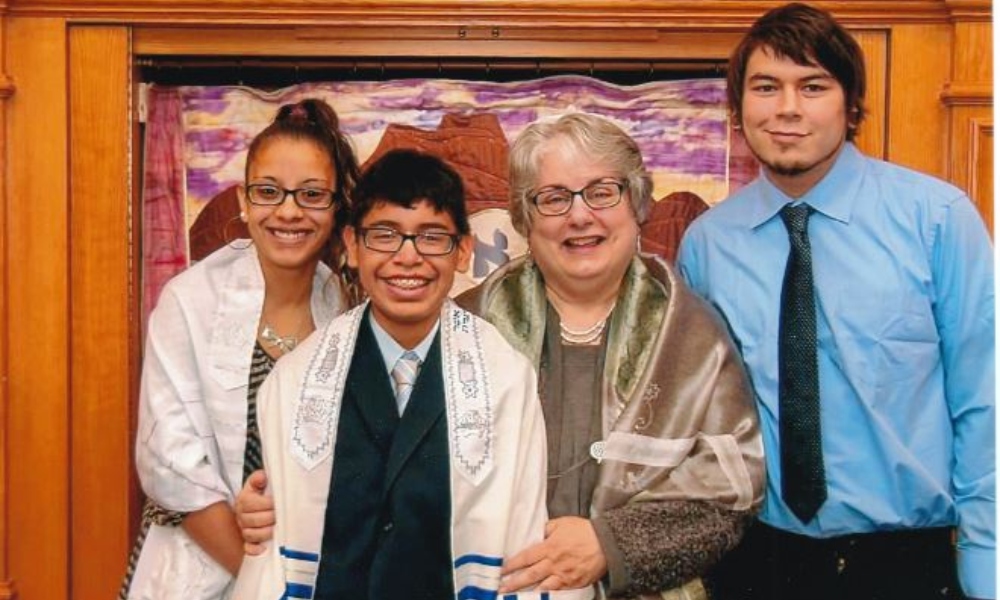My adopted daughter wanted a DNA test to see if she had any blood relatives living in America. Born in Paraguay, she was 26 and I encouraged her search. Everyone deserves to know their origins. Besides, I understood her sense of loss. At her age, I felt the same way even though I wasn’t adopted. I knew where my American relatives lived. The problem was none lived as Jews. If I had Jewish relatives, they were probably in Europe. I just didn’t know where.
Carmen Curiel Levy, my Venetian-born, mother’s mother, had boarded a Genovese passenger ship bound for New York in 1916 to join an older sister and start a new life. Widowed, just turned 18, she had a 9-month-old daughter. In those days, Yiddish-speaking Jews had plenty of company in America. Italian-speaking Jews, however, a tiny percentage of the population even in Italy, were greatly outnumbered here by the Italian-speaking Catholic community. That’s how my grandmother got lost along with everyone else in the next generations. Everyone but me. For some reason, I was born with a pintele yid, that tiny Jewish spark. My grandmother secretly taught me the Shema and told me about her life in Venice as the youngest daughter born to a Jewish scholar and his wife. Growing up I had two identities, an official outward Catholic and a vibrant inner Jew.
When I was almost thirty and she and my father had died, the pintele yid got stronger. I joined a synagogue, started Hebrew lessons, yet still mourned the loss of cousins, of aunts and uncles I had never met.
One day I decided to write to the HIAS/JDC office in Rome, the Hebrew Immigrant Aid Society/Joint Distribution Committee that was set up after World War II to help displaced Jews find surviving family members. It was a long shot. All I could tell them were the names of my grandmother’s parents, brothers, and sisters. Nine facts.
A long silence. I gave up hope. Months later a big white envelope arrived with European-style handwriting. It was from the secretary of the Venetian Jewish community, and it was beshert: the young woman who wrote to me was descended from my grandmother’s older brother, Luigi. She was as excited to hear about me as I was to hear about her. A large paper folded in quarters fell out of the envelope. Opened, my grandmother’s family tree spread out on my dining table: her seven siblings’ names, along with my great-grandfather, Leone Curiel, his father Menachem, his grandfather Giuseppe and so on back to Moise, born in 1698, the first of the Curiels to settle in that floating city—a lost tribe, my lost tribe.
The moment of seeing my family tree for the first time is etched in memory: the sound of beating wings, the press of bodies against my back, the unseen hands of generations resting on my shoulders—l’dor va dor.
But just as exciting a year later was the feeling of real hands pulling me back from the brink as I walked with my cousins Doriana and Davide in the Ghetto Vecchio in Venice, at long last found.
Carolyn Ariella Sofia teaches writing at Stony Brook University and belongs to Temple Beth Emeth in Mt. Sinai, NY. She has written about her real-life connection with novelists Cynthia Ozick and Jerzy Kosinski. A single adoptive parent, she adores her three grown children, three grandchildren, and three cats. Contact her at carolyn.sofia@stonybrook.edu. Her cousins Doriana and Davide Curiel can be found at www.davidshop.com, their Judaica shop in the Jewish quarter of Venice.
Top photo: With her children, Elana, Aaron and Joel at Aaron’s Bar Mitzvah, October 18, 2014, Temple Beth Emeth.

